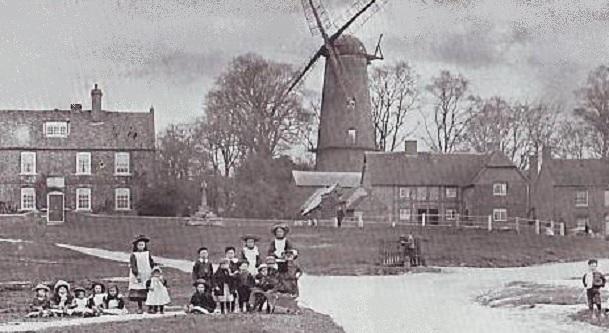-
07939 366424

Its name is Old English and means Queen's Estate (cwen tun). It is not known to which queen this refers, but possibly the Queen was Edith, the wife of Edward the Confessor. Known as "Fair Edith" she held manors in this part of Buckinghamshire, including a hunting lodge at Mentmore. Edward the Confessor had a palace at nearby Brill.
The Malet family were lords of the manor from 1066 until about 1348. At least one member went on the crusades, and had associations with the Hospitallers, the organization credited with rebuilding Quainton church circa 1340. The Hospitallers erected the cross on the village green, the base and shaft of which still remain.
The village green in the centre of the village has grouped around it some of the half-timbered thatched cottages for which the village is known.
The parish church is dedicated to the Holy Cross and St Mary. It is a 14th-century building of the style of gothic architecture known as Decorated. The west tower was built later in the 15th century. The church contains many memorial brasses and sculpture, including the 1689 tomb of Sir Richard Winwood carved by Thomas Stayner. The stone effigies depict the deceased lying in full amour, while his widow, Ann, who paid for the tomb, rests beside him, half sitting regarding her husband. In the chancel are a reredos and sedilia by William White who was responsible for the heavy Victorian restoration and rebuilding of the chancel in 1877.
Close by the church is the former rectory, a large house described by Pevsner as of vitreous red brick. The principal facade has a three–bayed centre and two canted bays. The house contains 16th-century linenfold panelling.
The plaque on the porch of the Almshouses reads: :Anno Domini 1687 —- These Alms houses were - then erected endowed by Richard Winwood Esq., son and heir of the Rt. Hon Sir Ralph Winwood Knight Principal Secretary of State to King James I
The Winwood Almshouses, still inhabited, were built to house elderly poor widows and widowers, have a gothic style of architecture belying the construction date of 1687. They are a terrace of eight small cottages, one storey high with a row of dormers in the attics.
One of the most visible buildings is the 70 ft high Quainton Windmill, built in 1830–32. Derelict for the greater part of the 20th century it was restored in 1997 and further renovated in 2018. In 2019, new sails were installed to bring the windmill back to full working order. Open to the public during the summer months.
Quainton was once linked to London by train from the Quainton Road station to Marylebone and Baker Street, and in the opposite direction travel was available to Verney Junction, Rugby and elsewhere but passenger services ceased in 1963. The station was also once a junction for the light railway (closed in 1936), sometimes known as the Brill Tramway, connecting Quainton with Brill.
The site now operate as the Buckinghamshire Railway Centre as a steam museum and tourist attraction during the summer and Bank Holidays.